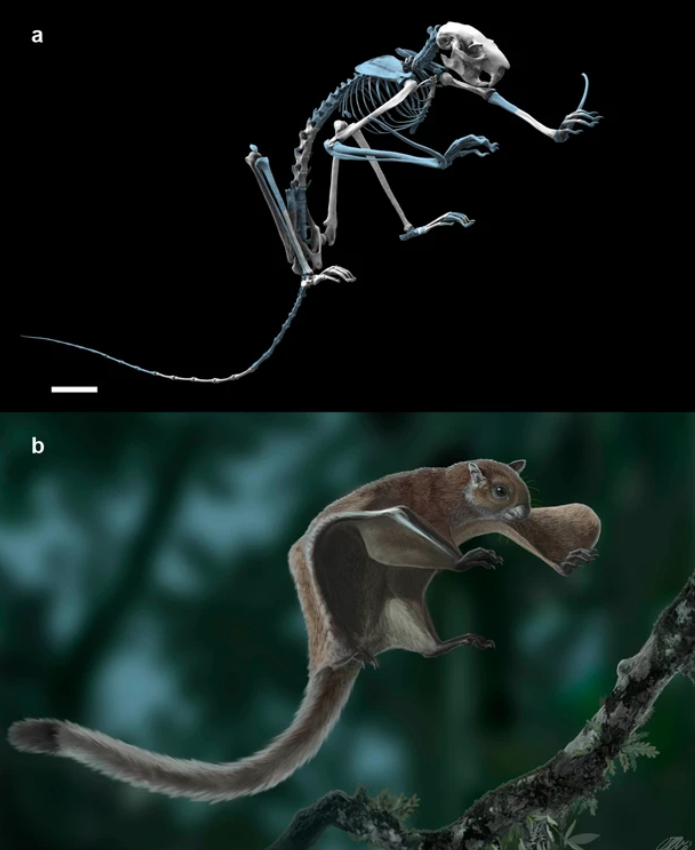Thermo Fisher Scientific › Electron Microscopy › Electron Microscopes › 3D Visualization, Analysis and EM Software › Use Case Gallery

Here we report the oldest fossil skeleton of a flying squirrel (11.6 Ma) that displays the gliding-related diagnostic features shared by extant forms and allows for a recalibration of the divergence time between tree and flying squirrels. Our phylogenetic analyses combining morphological and molecular data generally support older dates than previous molecular estimates (~23 Ma), being congruent with the inclusion of some of the earliest fossils (~36 Ma) into this clade. They also show that flying squirrels experienced little morphological change for almost 12 million years.
Raw data from each scanning were imported (as stack of TIFF 8-bit files) to Avizo 7.0 and Rhinoceros 5.0 for segmentation, repositioning, mirroring and visualization. Each cranial bone or bone fragment was segmented virtually removing the surrounding matrix using semiautomatic thresholding tools and obtaining individual 3D digital models. Up to 64 3D models were generated for both specimens prior to repositioning and mirroring them to assemble an almost complete skull. (…) The 3D models were repositioned using Avizo 7.0 based on bilateral symmetry and fracture congruence. An almost complete 3D virtual skull model was finally assembled using a total of 41 3D models of cranial bones. (…) Mandibles were exported to Rhinoceros 5.0 to repair meshes and were repositioned and joined to the resulting skull model using Avizo 7.0.
For Research Use Only. Not for use in diagnostic procedures.